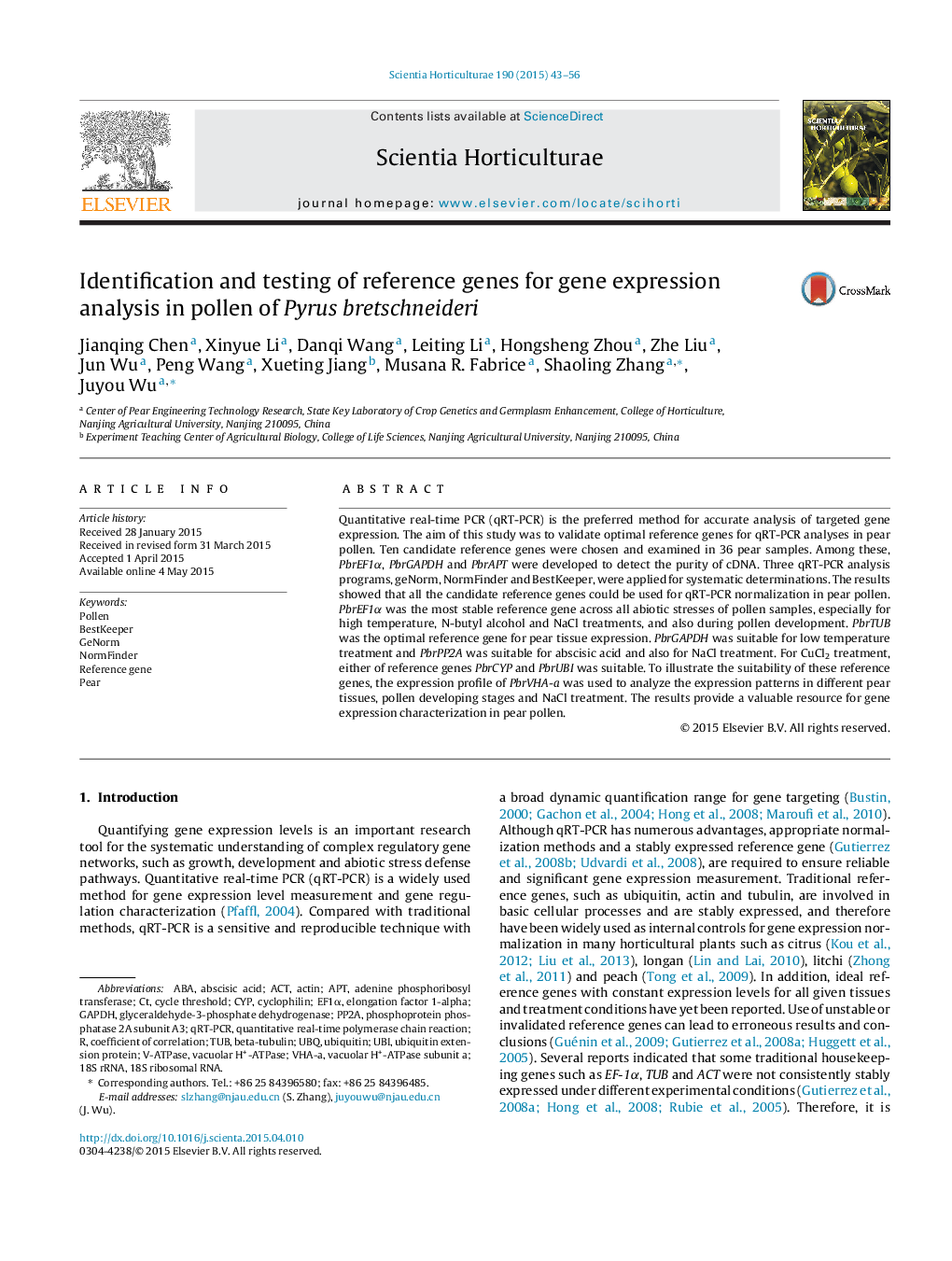| Article ID | Journal | Published Year | Pages | File Type |
|---|---|---|---|---|
| 4566145 | Scientia Horticulturae | 2015 | 14 Pages |
•Validate optimal reference genes for qRT-PCR in pear pollen.•Develop tree reference genes to detect the purity of cDNA.•Identify the expression pattern of PbrVHA-a in pear pollen.
Quantitative real-time PCR (qRT-PCR) is the preferred method for accurate analysis of targeted gene expression. The aim of this study was to validate optimal reference genes for qRT-PCR analyses in pear pollen. Ten candidate reference genes were chosen and examined in 36 pear samples. Among these, PbrEF1α, PbrGAPDH and PbrAPT were developed to detect the purity of cDNA. Three qRT-PCR analysis programs, geNorm, NormFinder and BestKeeper, were applied for systematic determinations. The results showed that all the candidate reference genes could be used for qRT-PCR normalization in pear pollen. PbrEF1α was the most stable reference gene across all abiotic stresses of pollen samples, especially for high temperature, N-butyl alcohol and NaCl treatments, and also during pollen development. PbrTUB was the optimal reference gene for pear tissue expression. PbrGAPDH was suitable for low temperature treatment and PbrPP2A was suitable for abscisic acid and also for NaCl treatment. For CuCl2 treatment, either of reference genes PbrCYP and PbrUBI was suitable. To illustrate the suitability of these reference genes, the expression profile of PbrVHA-a was used to analyze the expression patterns in different pear tissues, pollen developing stages and NaCl treatment. The results provide a valuable resource for gene expression characterization in pear pollen.
